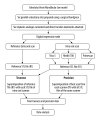Accuracy of 3 Intraoral Scanners in Recording Impressions for Full Arch Dental Implant-Supported Prosthesis: An In Vitro Study
- PMID: 39645575
- PMCID: PMC11636004
- DOI: 10.12659/MSM.946624
Accuracy of 3 Intraoral Scanners in Recording Impressions for Full Arch Dental Implant-Supported Prosthesis: An In Vitro Study
Abstract
BACKGROUND This study used an edentulous mandibular resin model with 6 parallel osteotomy sites and aimed to compare the accuracy (trueness and precision) of 10 digital impressions using 3 intraoral scanners, the 3Shape TRIOS 5, Medit i700, and Primescan, using Medit Link v3.3.2 software. MATERIAL AND METHODS A model simulating a patient's lower jaw was surgically prepared at 6 parallel sites (implant osteotomy), allowing placement of 6 implant analogues. Matrix-Direct transfer abutments were attached to the analogs, and a reference scan was obtained using a CeramilMap 600 extraoral scanner. Three intraoral scanners (3Shape TRIOS 5, Medit i700, and Primescan) made 10 digital impressions of each model. The data obtained were superimposed and compared using software (Medit Link 3.3.2) to evaluate accuracy. Mean values were statistically analyzed using one-way ANOVA and post hoc Tukey test. Differences were considered significant at a P value of less than 0.05. RESULTS The TRIOS 5 intraoral scanner displayed the lowest deviation for precision (37.8±4.53 μm) and trueness (54.9±11 μm), followed by Medit i700 (precision 40.6±4.17 μm, trueness 60.5±10.9 μm), whereas the highest deviation (precision: 49.1±8.31 μm, trueness: 72.3±10.4 μm) was reported when Primescan intraoral scanner was used for recording impressions of full arch implants. When the 3 intraoral scanners were compared, a statistically significant difference was observed in terms of precision (P<0.005) and trueness (P<0.005). CONCLUSIONS TRIOS 5 intraoral scanner displayed the lowest deviation values for precision and trueness (more accurate), followed by Medit i700 and Primescan intraoral scanners. However, deviation values of all scanners were within clinically acceptable limits.
Conflict of interest statement
Figures






References
-
- Gallucci GO, Benic GI, Eckert SE, et al. Consensus statements and clinical recommendations for implant loading protocols. Int J Oral Maxillofac Implants. 2014;29(Suppl):287–90. - PubMed
-
- Sallorenzo A, Gómez-Polo M. Comparative study of the accuracy of an implant intraoral scanner and that of a conventional intraoral scanner for complete-arch fixed dental prostheses. J Prosthet Dent. 2022;128(5):1009–16. - PubMed
-
- Katsoulis J, Takeichi T, Sol Gaviria A, et al. Misfit of implant prostheses and its impact on clinical outcomes. Definition, assessment and a systematic review of the literature. Eur J Oral Implantol. 2017;10(Suppl 1):121–38. - PubMed
MeSH terms
Substances
LinkOut - more resources
Full Text Sources

